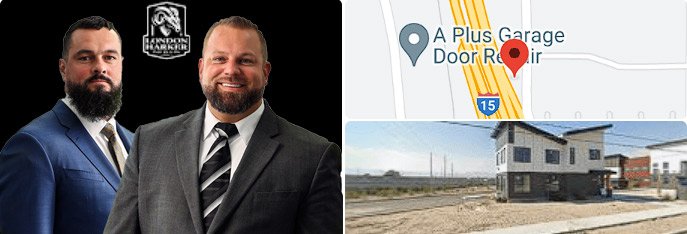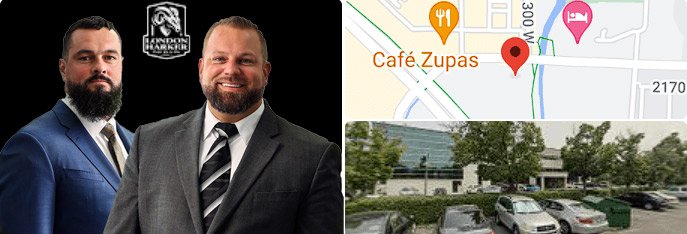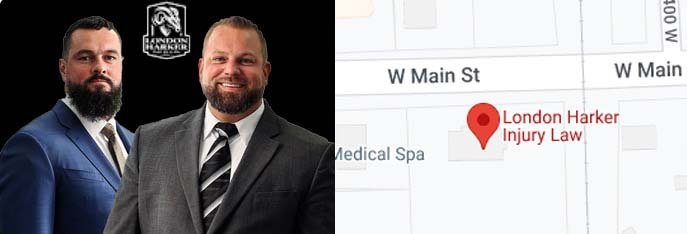Posted on Monday, October 13th, 2025 at 4:53 pm
Brain injuries are among the most devastating and long-lasting injuries a person can experience. In Utah, they represent a growing public health crisis—often called the “silent epidemic.” According to the Utah Department of Health and Human Services, hospitalization costs for brain injury victims exceeded $189 million in 2022 alone. Every day, six Utah residents are hospitalized due to a traumatic brain injury (TBI), and one person loses their life. Utah’s age-adjusted death rate from TBI (22.3 per 100,000) is higher than the national average.
When a brain injury occurs because of another person’s negligence—such as a reckless driver, unsafe premises, or careless employer—the victim has the right to pursue compensation under Utah personal injury law. Understanding the common causes of brain injuries in Utah is the first step in protecting your rights and pursuing justice.
If you or someone you love has suffered a brain injury, speak with an experienced Utah brain injury lawyer who understands the complex medical and legal aspects of these cases.
Table of Contents
- What Is a Traumatic Brain Injury (TBI) Under Utah Law?
- The Most Common Causes of Brain Injuries in Utah
- Recognizing the Symptoms of a Brain Injury
- Long-Term Consequences and Utah Resources
- Understanding Utah’s Legal System for Brain Injury Claims
- Prevention and Public Awareness
- Conclusion
- FAQs
What Is a Traumatic Brain Injury (TBI) Under Utah Law?
A traumatic brain injury occurs when an external force—such as a blow, jolt, or penetrating object—disrupts normal brain function. Utah Code § 26-53-102(6) provides an official definition of traumatic brain injury, which is used by both medical professionals and the courts in Utah.
Levels of Severity
- Mild TBI (Concussion): Often temporary but can have lasting effects with repeated injury.
- Moderate TBI: Loss of consciousness for up to a day; recovery may take months.
- Severe TBI: Prolonged unconsciousness (over 24 hours) and potential permanent disability.
Common Types of Brain Trauma
- Concussion
- Contusion (Bruising)
- Hematoma (Blood Clot)
- Edema (Swelling)
- Diffuse Axonal Injury (DAI)
- Penetrating Head Injury
The Most Common Causes of Brain Injuries in Utah
1) Falls – Utah’s Leading Cause of Brain Injuries
According to state data, falls account for more than half of all TBI hospitalizations and deaths in Utah. Slip and fall incidents are especially dangerous for children and older adults.
Common fall-related causes include:
- Slippery or uneven flooring in stores or public places
- Unsafe stairways or missing handrails
- Construction site falls from ladders or scaffolds
These cases often fall under premises liability law, meaning the property owner may be held responsible for unsafe conditions.
In workplace settings, employees injured by a fall may qualify for workers’ compensation under Utah Code § 34A-2-201. However, if third-party negligence contributed (such as a defective ladder or unsafe worksite), the injured worker may pursue an additional personal injury claim.
2) Motor Vehicle Accidents (MVAs)
Motor vehicle crashes are the second leading cause of TBIs in Utah, responsible for roughly 13% of related hospitalizations and fatalities. Even a “minor” collision can result in significant brain injury due to the violent forces involved.
Common mechanisms include:
- Head striking a window, dashboard, or steering wheel
- Whiplash and rotational motion leading to Diffuse Axonal Injury (DAI)
- Penetrating injuries from flying debris
Utah’s no-fault insurance system requires victims to file first with their own insurer under Personal Injury Protection (PIP). However, if medical costs exceed $3,000 or the injury results in permanent disability, victims can pursue a liability claim against the at-fault driver (see Utah Code § 31A-22-309).
Learn more about how this process works in our guide: How Utah’s No-Fault Insurance Works After a Car Accident.
3) Sports and Recreational Accidents
With Utah’s outdoor culture and mountain sports, sports-related brain injuries are common. These include concussions from football, soccer, boxing, bicycle and skateboard accidents, and skiing or snowboarding falls.
Utah law protects young athletes through Utah Code § 26-53-201, which requires sports programs to adopt head injury policies. Bicycle crashes, in particular, account for a notable share of TBI cases statewide.
For detailed guidance after a crash, see: Why Prompt Medical Treatment Matters After a Car Accident in Utah and What Not to Say to Insurance After a Utah Car Crash.
4) Acts of Violence, Negligence, and Medical Errors
Brain injuries can also result from:
- Violent assaults or gunshot wounds
- Domestic abuse or shaken baby syndrome
- Medical malpractice (e.g., surgical errors or oxygen deprivation)
- Defective products causing head trauma
- Toxic exposure, including carbon monoxide or industrial chemicals
Medical negligence and defective product cases require expert testimony to prove fault, making early legal involvement critical.
Recognizing the Symptoms of a Brain Injury
Symptoms may appear immediately or develop over days or weeks. Common warning signs include:
- Severe headaches or dizziness
- Loss of consciousness or confusion
- Nausea, vomiting, or seizures
- Slurred speech or vision problems
- Memory or personality changes
Prompt medical evaluation is critical. Untreated TBIs can worsen quickly, causing irreversible damage.
Long-Term Consequences of Brain Injuries & Utah Resources
Many TBI survivors face lifelong challenges, such as chronic pain, cognitive and speech impairments, emotional instability, and loss of independence and earning ability.
The University of Utah’s Craig H. Neilsen Rehabilitation Hospital offers advanced TBI treatment, including neuropsychological testing, cognitive therapy, and recovery programs. Learn more at the University of Utah Health’s Brain Injury Program.
The Utah Brain Injury and Spinal Cord Injury Fund provides financial aid for rehabilitation services to qualifying individuals who lack sufficient insurance coverage.
Understanding Utah’s Legal System for Brain Injury Claims
Comparative Negligence in Utah
Utah follows a modified comparative negligence rule (Utah Code § 78B-5-818), meaning you can recover damages as long as you are less than 50% at fault. Your recovery is reduced by your percentage of fault. A skilled Utah brain injury lawyer will work to minimize claims of shared fault and protect your compensation.
Statute of Limitations: Don’t Wait to Act
- Personal Injury Claims: 4 years from the date of injury (Utah Code § 78B-2-307)
- Wrongful Death Claims: 2 years from the date of death (Utah Code § 78B-2-304)
Recoverable Damages in a Utah Brain Injury Case
- Medical and Rehabilitation Costs: Emergency care, neurosurgery, therapy, long-term medication
- Lost Wages & Earning Capacity: For victims unable to work or perform previous job duties
- Pain and Suffering: Compensation for the emotional and physical toll of a TBI
- Home Modifications & Long-Term Care: For victims requiring permanent support
Insurance companies often downplay TBI cases, claiming full recovery is possible with minimal treatment. An experienced attorney collaborates with neurologists, vocational experts, and economists to ensure your claim reflects the true lifelong impact of the injury.
Prevention and Public Awareness
Utah continues to invest in prevention programs aimed at reducing brain injury rates statewide, including helmet safety campaigns from University of Utah Health, fall prevention education for seniors, and public awareness initiatives through the Violence and Injury Prevention Program (VIPP).
Conclusion: Protecting Your Future After a Brain Injury in Utah
Brain injuries change lives forever—but when they’re caused by negligence, you have legal rights. Whether your trauma occurred in a car accident, slip and fall, or sports incident, pursuing fair compensation can help you rebuild your life and access the care you deserve.
If you or a loved one suffered a brain injury in Utah, contact the Sandy brain injury lawyers at London Harker Injury Law for a free consultation. Our experienced team understands the complex medical and legal challenges surrounding TBIs and will fight to secure the compensation needed for your long-term recovery and stability.
FAQs: Brain Injuries in Utah
What are the most common causes of brain injuries in Utah?
Falls, motor vehicle accidents, and sports or recreational incidents lead the list. Acts of violence, medical errors, and defective products also contribute to serious brain injuries.
How long do I have to file a brain injury claim?
In most cases, you have four years from the date of injury to file a personal injury lawsuit in Utah, and two years for wrongful death claims.
Do I have to prove I was completely fault-free?
No. Under Utah’s modified comparative negligence, you can recover damages if you are less than 50% at fault, but your recovery will be reduced by your percentage of fault.
Where can I find specialized brain injury treatment in Utah?
The University of Utah Health Brain Injury Program and the Utah Brain Injury and Spinal Cord Injury Fund are key resources.



